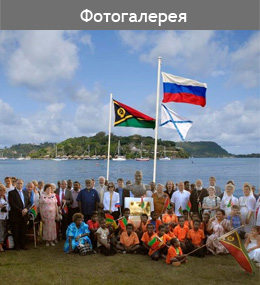Научные труды
David Brandenberger
Valery Tishkov, Chechnya. Life in a war-torn society Berkeley, University of California, 2004, 302 p. (Public Anthropology, 6)
The present volume, an abbreviated translation of Valery Tishkov’s Obshchestvo v vooruzhennom konflikte: Etnografiia chechenskoi voiny (Moscow: Nauka, 2001), offers a sophisticated analysis of Chechen society during the 1990s, contextualizing a conflict that has claimed tens of thousands of lives, undermined the stability of the North Caucasus and hobbled Russia’s transition from a Soviet republic to a modern, democratic state. The director of the Institute of Ethnology and Anthropology at the Russian Academy of Sciences and a former minister of nationality policy under Boris Yeltsin, Tishkov aspires to provide an account of the Chechen war that is less impressionistic and anecdotal than that of commentators like Anna Politkovskaia, Anatol Lieven, Anne Nivat, Matthew Evangelista and John Dunlop.
Approaching the Chechen crisis from an anthropological perspective, Tishkov assails clichés and commonplaces that are typically used to describe the conflict as an eternal, primordial “two-hundred years’ war.” Instead, Tishkov stresses the role that recent events have played in precipitating and aggravating what he describes as a localized intra-Chechen civil war. While he is willing to concede that certain aspects of Chechen militancy can be traced to a local culture that has historically valorized autonomy, self-rule and a heroic martial tradition, Tishkov perceptively notes that this militancy also bears the tell-tale traces of modernity, channeled mainly through the Soviet experience. Tracing much of the Chechens’ sense of exceptionalism to their difficult years in Siberian exile that followed Stalin’s 1944 ethnic cleansing of the North Caucasus, Tishkov argues that these emotions matured after the Chechens’ return home between the late 1950s and mid-1980s under the influence of official Soviet historical myths stressing “people power,” “just wars,” national primodialism, and ethnogenesis. In other words, Tishkov essentially credits the USSR with the accidental creation of a Chechen “imagined community” that unified a population which until then had only had a vague sense of group identity above the clan level.
As complicated as interethnic relations in the North Caucasus tend to be, Tishkov contends that war in the region was never inevitable. Instead, he blames the machinations of Chechen political entrepreneurs and their opportunistic use of nationalism and Islam for the explosiveness of Dzhokar Dudaev’s 1991 declaration of independence and the First and Second Chechen Wars (1994-1996, 1999-). Such factors, Tishkov contends, transformed normative regional tensions into sectarian violence. They also debased Chechen social and political institutions–something Tishkov terms “demodernization”–inhibiting the ability of the local community to put an end to this conflict. Indeed, despite the title of the book, Tishkov suggests that Chechen “society” is something of a misnomer, regional unity having decomposed during the 1990s into a myriad of incompatible factions favoring everything from rapprochement with Russia to various models of autonomy and independence. Such thorough-going dysfunction explains why no Chechen leader or Russian commandant has succeeded in restoring order to the region since 1991.
Scathingly critical of Chechen nationalist leaders of every stripe, Tishkov is also quite frank about the errors committed by Russian civilian and military elites, focusing on their incoherent, inconsistent approach to the Chechen conflict and stubborn unwillingness to seek a constructive, negotiated settlement. That said, Tishkov seems reluctant to subject Russian society to the same anthropological deconstruction that he pursues in regard to the Chechens, missing an opportunity to identify Russians’ own vulnerability to ethnic exceptionalism, political opportunism, patriotic jingoism and imperial irredentism. Indeed, Tishkov at times seems to attribute to the Chechens sentiments and emotions that during the 1990s were widely present throughout the former Soviet space.
Tishkov’s most thought-provoking work stems from his anthropological analysis of some fifty detailed interviews with Chechen informants. Among other things, this approach allows him to give the Chechens a voice of their own by quoting directly from interview transcripts. Of course, it should be noted that Tishkov’s sample is somewhat problematic, insofar as most of his interviews were conducted outside Chechnya during the mid-1990s within a diaspora community that is known for its assimilation and reservations regarding the cause of Chechen independence. And while Tishkov supplements this research with interviews conducted by associates in Chechnya proper, the latter material–while somewhat more diverse–relies heavily on lowland urban populations and neglects less Russified opinion in the republic’s highland villages. A shortcoming that stems from the difficulty of conducting research in Chechnya, this selectivity may nevertheless account for why Tishkov’s “ordinary Chechens” appear so Sovietized and ambivalent about political independence and politicized Islam.
Such caveats aside, Tishkov’s work on Chechen society is for the most part satisfyingly rigorous and thorough. Unfortunately, Tishkov breaks with this sense of dispassionate, scholarly reserve when dealing with Chechen politics–a subject he views with poorly concealed fear and disgust. Unwilling to distinguish public officials’ bravado and sloganeering from their more pragmatic administrative records, Tishkov rails against Chechen nation-building efforts during these years on the basis of a superficial reading of a handful of radical sources. Although this allows Tishkov to construct a damning case against the Chechen political elite, it prevents him from providing a less judgmental survey of attempts to develop a post-Soviet Chechen “national idea” during the 1990s. Such an investigation would have been quite useful, complementing Tishkov’s work on Chechen society while at the same time supplying a basis for future comparative work with other former territories of the USSR. As is evident from this brief review, Chechnya: Life in a War-Torn Society resists simplistic classification. While it suffers from the same partisanship and anecdotalism that mars much of the literature on the Chechen crisis, it is also an important and pioneering study. It deserves to be widely read.







